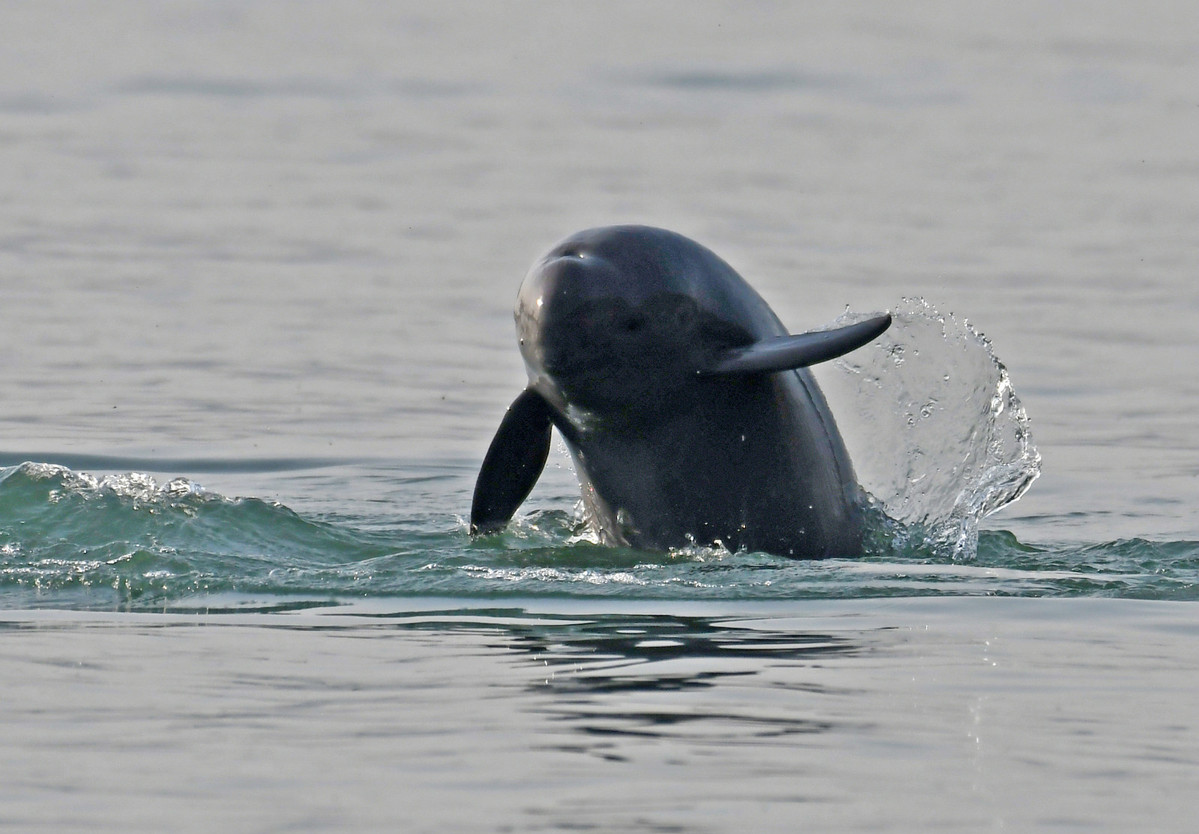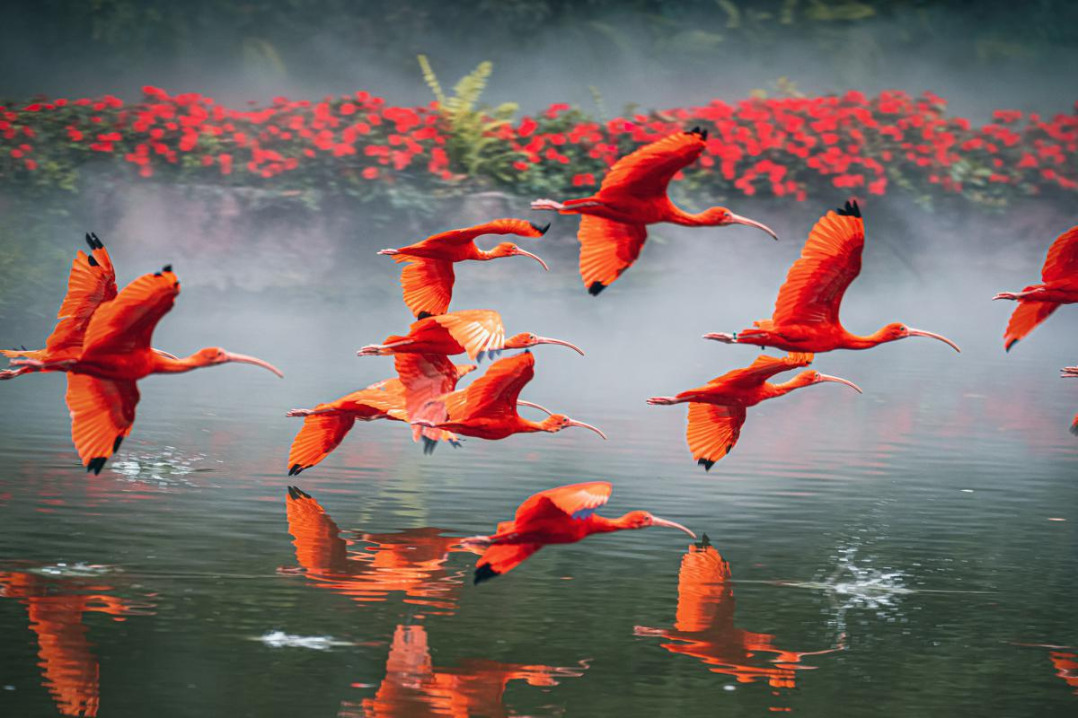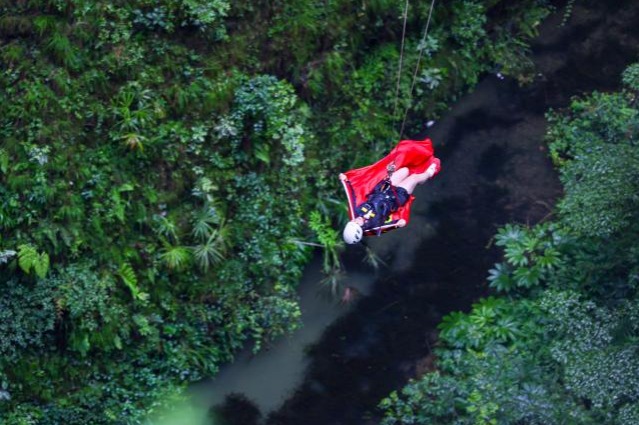China enhances efforts to restore biodiversity of Yangtze River


NANJING - In Yaoguan township, East China's Jiangsu province along the Yangtze River, lichens began to reemerge after being absent for over three decades.
"Lichen is a symbiont of fungi and green algae. They are known as 'environmental monitors' as they are very sensitive to pollutants such as automobile and industrial exhausts and acid rain," said Feng Hui, a local official.
What happened in Yaoguan, Changzhou city, is a reflection of the progress made by China in recent years in restoring the biodiversity of the Yangtze River, China's longest.
The Yangtze, which stretches over 6,300 km, boasts rich and complex terrains and climate along its basin and has one of the highest levels of biodiversity in the world. Towering mountains, dense forests, fertile wetlands and bustling waterways have made the Yangtze River basin a vital habitat for charismatic species such as the snow leopard, giant panda, Chinese sturgeon and Yangtze finless porpoise.
Data showed that there are more than 4,300 kinds of aquatic life living in the Yangtze River basin, including more than 400 types of fish.
The finless porpoise, an endemic species in China, is also an important indicator of the ecology of the Yangtze.
Jiang Yi, a full-time volunteer, still vividly remembers her first encounter with the finless porpoise.
"It was on Jan 1, 2014, when I saw over 40 finless porpoises jumping above the surface of Poyang Lake," she recalled. Poyang Lake is China's largest freshwater lake in the eastern province of Jiangxi.
"The scene was very spectacular. This is the first time I've seen a real finless porpoise," said Jiang. Since then, she has been determined to protect the rare species.
Since 2016, protecting the environment of the Yangtze, rather than large-scale development, has become the focus of the country's river development plans. The rallying call was heard as authorities across China carried out a series of measures, including preventing water pollution, restricting ship movement and patrolling the nature reserves.
Scientific research by the Ministry of Agriculture and Rural Affairs in 2017 showed that there were 1,012 wild finless porpoises in China, of which 445 were in the main stream of the Yangtze River and 457 live in Poyang Lake.
In addition to its strategic status in environmental protection, the Yangtze River also flows through many economically developed provinces and municipalities, making the region's sustainable and green development key to further driving China's economic growth.
China in 2019 unveiled an action plan to protect and restore the Yangtze River with goals including eliminating more than 90 percent of "black and odorous" water bodies in cities at or above the prefectural level in the Yangtze River Economic Belt by the end of 2020.
In April this year, the country released a guideline on improving the sewage treatment charging mechanism to promote green development in the Yangtze River Economic Belt. The move aims to use price leverage to improve the prevention and control of water pollution in the Yangtze River, according to the guideline.
To further preserve biodiversity along the river, China began a 10-year fishing moratorium from the beginning of this year in 332 conservation areas in the Yangtze River basin, which will be expanded to all the natural waterways of the country's longest river and its major tributaries from no later than Jan. 1, 2021.
Wu Huashan, 42, had been a fisherman along Poyang Lake for over two decades. In February, he bid farewell to his boats and received more than 70,000 yuan (about $9,847) in compensation. Over 100,000 fishermen in about 300 villages along Poyang Lake will end their centuries-old lifestyle like Wu and step ashore.
Upon ending his fishing career, Wu rented about 26 hectares of paddy fields in Xiangshan township, Nanchang city, to raise crayfish. This year, he put 5,000 kg of crayfish seeds into the paddy fields and has already pocketed over 300,000 yuan by May.
Shen Guohua in Yonglian village of Zhangjiagang, a county-level city in Jiangsu Province, also took the initiative to end his 44-year fishing life.
He is currently employed by the local agricultural authorities as the captain of a patrol ship to contribute to the ecological protection of the Yangtze River. "The mother river has fed us for generations. Now it's time for us to repay," he said.
- SCO nations embrace China's expertise in heritage preservation
- China's aging population takes to the web
- Beijing rolls out flood prevention measures
- Collapse in Guangxi mining area kills 3 people
- Chimelong Birds Park launches conservation festival
- Self-media 'shifting perceptions' of China among young people





































